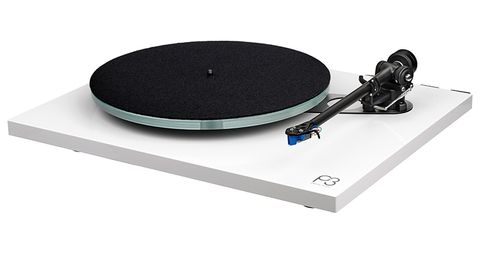Turntables are a particularly highly contested niche in hi-fi’s arena of items that aspire to be ‘the greatest.’ Others claim it’s a Garrard, Roksan, Oxford Acoustics, Voyd, Pink Triangle, SME, Oracle, or Continuum, while others swear it’s a Garrard, Roksan, Oxford Acoustics, Voyd, Pink Triangle, SME, Oracle, or Continuum.
The Goldmund Reference, on the other hand, is widely regarded as the world’s most amazing vinyl spinner.
Take a peek at it. Is it possible that this deck might have come from any decade other than the 1980s? It’s a real ‘uber deck,’ decked out in ostentatious high tech and personifying the decade’s ethos of ‘if you’ve got it, flaunt it.’ Back then, this was the kind of hi-fi gadget you’d buy just because you could afford it. It was outrageously costly, luxuriously polished, and insanely over-engineered. What’s more, it’s made in Switzerland, so you could pick one up on your way back from a meeting with your bank manager in Geneva!
The Reference was not the company’s initial product, but it was the one that launched it into the spotlight. The tonearm that would become the Goldmund T3 was invented by a group of physics students in 1978. It received wonderful reviews in the United States by the end of the following year, and a matching turntable was in the works. By 1981, Goldmund had released the initial Studio turntable. With the unveiling of this at the 1983 Chicago CES, it outperformed itself – and everyone else.
The new Georges Bernard design, which was claimed to offer a unique blend of “highly innovative design, classic Swiss craftsmanship, and gorgeous finish,” was unlike anything the world had ever seen before. It included a number of interesting – if not groundbreaking – solutions to the issues with vinyl disc replay. The first was its large 600x540x750mm plinth, which was completed in gold plated brass, black anodized aluminium, steel, and black metacrylate, along with an integral ‘support table.’ Its design and surfaces were optimized to provide optimal mechanical grounding (i.e. vibration transfer) in the top-to-bottom direction, despite its massive weight. Turntable isolation was still a pretty inexact science at the time, so this was quite revolutionary thinking. It did an excellent job of damping bad vibrations in conjunction with the extremely powerful damped spring suspension.
The speed control system came next. By the early 1980s, belt drive had become standard for any self-respecting European superdeck, so the Reference included a very high-quality AC synchronous motor mounted in a suspended heavy base to reduce vibration, driven by a computer-controlled speed regulator with a claimed accuracy of 0.01 percent. A Technics-style four-digit tachymeter speed display was included, as well as speed adjustment of +/- 4%. The ’14 function’ computer even had a reprogrammable timer that could keep track of the overall playing time of your stylus. All of this was controlled by a gold-plated backlit touch control panel — really lovely!
The 30kg aluminium subchassis (complete with lead inserts for dampening) held a gigantic 15kg metacrylate and brass sandwich dish with only 0.005cm of eccentricity, according to the manufacturer. This was supported by a micron-toleranced hard bronze receptacle and a bearing shaft machined from hardened non-magnetic stainless steel. The Goldmund T3F tonearm was mounted on a 40mm metacrylate support to reduce resonances, and its seven programmed movements were controlled via the turntable’s control panel.
The sound was excellent, albeit not to the taste of many Linn-obsessed British audiophiles. The Goldmund was extremely transparent, and it didn’t contribute or subtract much. Rather, the recording had a large open window. If there were any criticisms, it would be the cold clarity of the recording — rather than focusing on rhythms and dynamics, you got a neutral interpretation of the album and all of its imperfections. The Reference was tonally and texturally exceptional, giving clarity that was a revelation by the standards of the day, much like a top high-speed open reel tape machine.
Given that only 300 Reference tonearms were made (compared to 1,000 T3F tonearms), and that the Reference’s original retail price was around £10,000 in the 1980s, it’s unlikely that you’ll find a deal in the classifieds. These decks are now prized for their sound, vintage appearance, and general rarity, thus the price will be negotiated between you and the vendor. Goldmund’s website no longer mentions it, despite it being a powerful and iconic memory of another era.







